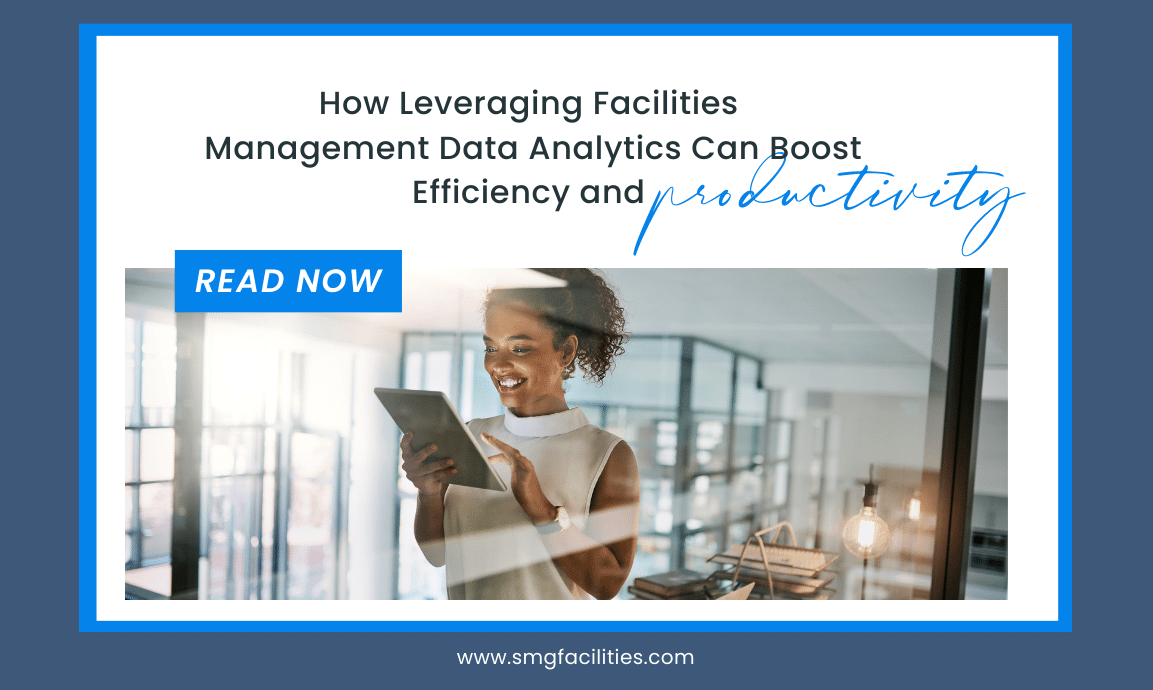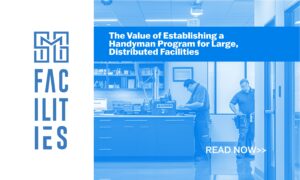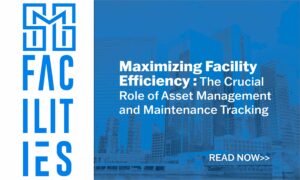Traditional facilities management is characterized by reactive response, daily disruptions, shifting priorities, and chasing fires (sometimes literally). But growth-minded organizations are waking up and realizing that “facilities” isn’t just a cost driver on a budgeting spreadsheet but has the opportunity to be a significant area of cost savings.
By turning to scalable, technology-based facilities management practices, organizations realize improved operational performance and increased efficiency, which drive cost savings. Their secret? Embracing data analytics for real-time insights into how a building’s assets behave, what needs improvement, and what repairs or replacements will be necessary soon.
A data driven facility management model helps facility professionals make informed, proactive maintenance decisions that avoid costly mishaps by keeping buildings and workspaces safe, clean, and comfortable for employees while maintaining important “brand” standards.
Key Challenges of Facilities Management
Every organization has different challenges, but we’ve rounded up three of the most common inefficiency drivers faced by organizations of all sizes.
Understanding Maintenance “Spend”
Without a single source of truth for tracking maintenance spend, facilities professionals poring over spreadsheets and paid invoices often find they’re still in the dark about just how efficient their equipment is performing and what is the true cost to maintain those assets and their facilities as a whole. No wonder this is one of the most significant expenditures for any facility team.
Part of the problem is that these often manual processes only offer a snapshot of the situation. Tracking data in a spreadsheet is one traditional way to get the big picture, but finding the time to complete an in-depth data analysis is a non-starter when maintenance tickets start piling up.
Even if the analysis does get done, it’s up to you to research various solutions and arrive at a decision.
Finding the Right Maintenance Provider
Without a centralized way to research and identify the ideal maintenance provider for a given work order, managers often turn to the same maintenance provider – despite their past performance, their outrageous billing practices, or even if a malfunctioning piece of equipment isn’t their specialty.
And then there are the compliance considerations to keep in mind. Did that maintenance crew have the proper certification to work on that equipment? Didn’t that door break down only three days after Bob came here to fix it last time?
Choosing the wrong service provider for a maintenance issue has significant implications for the facility manager and the organization itself. But without data, there are no easy answers to these critical questions – and because traditional decision-making processes in facilities management are often reactive, you could find yourself making an uninformed decision in the middle of an emergency.
Outdated Facility Management Software
Dealing with a paper-based work order system can be frustrating enough, but sometimes an outdated piece of software causes even more trouble – or even worse, multiple applications that don’t talk to one another.
Employees feel the pain, too. They have no way to check the status of their ticket on their own; that’s always a phone call to you. And what’s more frustrating for users than spending 15 minutes entering a ticket only to find out seven other people already reported the same issue? That’s right – when the maintenance technician shows up at their retail store, unannounced, to replace that bulb right in the middle of the holiday rush.
End users tired of navigating old systems find creative ways to let you know when there’s a problem – often by picking up the phone or emailing a passive-aggressive note to your inbox. These workarounds open the door for aggravating reporting errors and can even cause dangerous delays in issue response.
Data Analytics in Facilities Management
In a facilities management context, data analytics refers to using technology to collect, analyze, and interpret facility data to uncover trends and insights about how buildings and other assets are used. In addition to helping identify areas where facilities managers can make improvements, data analytics can help managers predict facilities’ future needs. Proactive, data-driven decisions around asset management help organizations mitigate risk and maximize cost savings.
Five types of analytics that produce “actionable” data and drive these crucial insights are as follows:
- Descriptive Analytics: Looking at the past. How many people visited that building? Is that restroom in regular use?
- Diagnostic Analytics: Looking for the “why” behind an event. Why did that machine break down? Why do people leave the loading dock’s bay door open?
- Predictive Analytics: Thinking about what might happen in the future based on what you know about the past. How many people are likely to use that walkway next month?
- Prescriptive Analytics: Figuring out evidence-based ways to solve a problem. How did we fix that critical piece of equipment last time? Did the repair hold up as well as we’d hoped?
- Cognitive Analytics: Making sense of unstructured data. What are people saying about this store on social media? What kinds of feedback are we getting from our employee or guests?
How Data Analytics Boosts Facilities Management Efficiency
Let’s circle back to our challenges from earlier to see how applying data analytics in facilities management can provide greater asset visibility, drive reduced operating costs, and improve efficiency.
A Streamlined Facilities Management Interface Offers Data-Driven Insight into Maintenance Spend
Descriptive and diagnostic analytics around historical repair and maintenance (R&M) work orders provide critical insight that can help facilities managers implement measures to mitigate risk and reduce potential disruption and downtime.
Without a robust data analytics system in place, those insights never even make it off the spreadsheet. Analytics makes it possible to identify and understand the trends that not only make systems and facilities more efficient, but that position you as a problem-solver who’s ready for bigger responsibilities (and the pay bump that comes with them).
Data Helps You Find the Right Maintenance Professional for Your Organization’s Needs
Data analytics can help streamline facility maintenance decisions by factoring in data points like geography, trades, maintenance schedules, and the scope of work associated with the repair. The right facility management software can even route issues according to their associated trade based on custom selection criteria. In other words, you can find the right maintenance provider every time.
And say goodbye to maintenance requests on sticky notes. Analytics can also simplify your process for employee submission of issues, categorizing maintenance service requests so that users can easily enter a request with no prior knowledge needed. Because the system tracks all requests in the same place, employees (and you) avoid the frustration of creating duplicate requests.
Users also get real-time updates on their request as well as any associated work order statuses – including technician scheduling notifications, which can help avoid frustrating or untimely disruptions for employees at your facility.
A Single Source of Truth for Data Driven Facilities Management Improves Efficiency
No more sticky notes. No more spreadsheets. No more folders living in filing cabinets scattered across your facility.
Analytics provides a holistic view of your organization: track maintenance and repair activities, and analyze productivity, all within the same solution. An integrated issue matrix lets you optimize decision-making and inform associated personnel while enforcing SLAs and NTEs.
You can do all of that in the same system where you store the information on your assets, including type, book value, age, original cost, expected life, and work order history. Getting a complete view of the assets and equipment at your facility means you can predict when a given piece will need repair or replacement. You can then schedule the work ahead of time to help minimize disruptions, rather than paying a vendor a premium to replace it in the middle of a breakdown.
When the project is complete and invoiced, you can even identify whether it was an expense or capital expenditure.
“Actionable” Data Drives the Future of Facilities Management
Data analytics for facilities management should be part of every organization’s roadmap for the future. Making data-driven decisions around future maintenance “spend”, finding the right maintenance partner for your organization, and using a single source of truth for everything from work requests to expenses are just the beginning.
The efficiencies and cost savings of implementing data driven facility management outweigh the challenges of capital constraints, internal bureaucracy, and broken pixie-dust promises from previous vendors – especially with an experienced integrated facilities management company at your side.
SMG Facilities is that experienced partner. We’ve provided exceptional service to multi-site clients since 1996 and can scale our solution to meet your needs. We can take the lead of your facilities management process or join forces with your existing facilities team to help them reach new heights.It all starts with a conversation. Contact us today for a no-cost, no-obligation analysis of your current processes, systems, and workflow.







